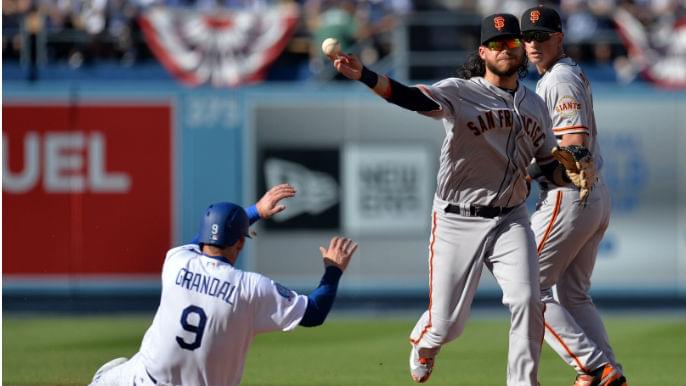© Gary A. Vasquez-USA TODAY Sports
Many years from now, people will characterize 2017 as the year in which analytics officially dominated MLB thinking.
The Los Angeles Dodgers and Houston Astros were two of the most analytic-driven teams, and they matched up in last year’s World Series. The Astros used lineups, field positioning, relief pitching, and many more analytical tools to drive their success that culminated in a World Series win.
The addition of Evan Longoria has given the Giants two Gold Glove infielders on the left side of the field, including shortstop Brandon Crawford. Their expertise, coinciding with the rise of analytics, has allowed them to make adjustments relative to each batter and pitcher.
“They have all the information, but they still rely on the instincts of the players out there to make those changes,” The Athletic’s Andrew Baggarly told KNBR Friday afternoon. “There are all kinds of little permutations as to when they will move but we hadn’t seen that before. That’s partly analytics, but also partly their personnel.”
Like all sports, baseball is a copycat league. We have already seen the Giants begin to use analytics more actively in their on-field positioning.
Last week, Longoria moved from his traditional third-base slot to the right side of the infield once Yasmani Grandal, a lefty that pulls most of his hits, stepped up to the plate. The Giants have deployed shifts in the past, but not to this extent, as NBC Sports Bay Area’s Alex Pavlovic notes.
Giants manager Bruce Bochy will continue to lean on Longoria and Crawford to evaluate the hitter and pitcher in a given situation, then make the switch based on communication. Many teams don’t have that luxury.
“I think It’s a blend of using the analytics but also relying on good players who have good instincts to position themselves, too,” Baggarly said.

